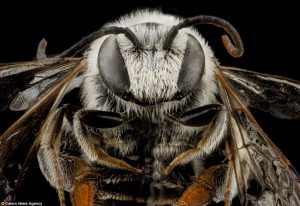Diversity in Biodiversity Science
Diversity in Biodiversity Science
By UFBI Fellow Joan Meiners
We are passionate about biodiversity science for a myriad of reasons. Biodiversity in nature not only makes for a more interesting, colorful, intriguing world, but has been linked to environmental health and critical ecosystem services1. Aquatic plant diversity helps maintain water quality1, diverse bee assemblages provide higher quality pollination services2, and a good mixture of gut microbiota help you digest your food more effectively3. In addition to being undeniably useful, these creatures are also fascinating to view under a microscope and to imagine interacting in their natural habitats.

Source: Pinterest
There is also a myriad of ways to measure and study biodiversity. Scientists have a suite of tools and methods to attract and capture animals or to find and measure plants to record differences between them and count variety across a region or a year. In my research on native bee biodiversity, for example, we assess the variety of species in a habitat both by swinging insect nets to collect the bees we can see as well as placing colored bowls of water on the ground that will attract and collect bees we might miss with our nets. We then quickly euthanize them, pin them into storage boxes, and examine their subtle differences under a microscope to quantify the biodiversity we captured. Aquatic ecologists can evaluate the biodiversity of lake ecosystems by dragging fish nets, dropping crab traps, using electricity to stun and collect animals, or taking water samples to test for microorganism diversity back in a lab. Acoustic ecologists can measure tropical biodiversity by recording sounds in a rain forest and then using software to identify and count how many different species are making noise in that ecosystem! The diversity of research techniques used to study biodiversity is a fascinatingly long list in itself.
As a biodiversity-curious citizen, you also have a range of opportunities to join the hunt for biological variety that can be fit into any schedule or vacation. You can record the bird species visiting your backyard each day and post that information online, or you can join thousands of other enthusiasts on a Christmas Bird Count effort once a year to document all the bird species visiting your area. You can sign up to monitor wooden nest boxes for native bee species, or you can collect ants using cookies on a notecard in your front yard and mail them to taxonomists documenting ant diversity across the world. You can work from home an hour a week to transcribe written museum records to help build databases that can be used to evaluate changes in biodiversity, or you can volunteer to help collect, image and database pressed plant specimens in an herbarium. Your commitment can be short and sporadic, or consistent and trained. You can work directly with scientists in your area on a weekly basis, join a BioBlitz event once a year, or contribute by cataloging information over the internet from home whenever you have a moment. All together, these efforts contribute to a better understanding of our natural world and the ways we can make sure it continues to keep us healthy and inspired.

Source: www.iNaturalist.org
The study of biodiversity is not only enhanced by a variety of methods, tools, and ways of contributing. Incorporating a diversity of perspectives from which we view our global diversity and ways in which to study it can also benefit us all. There has been a push to diversify the group of scientists tasked with “assessing the state of biodiversity and of the ecosystem services it provides to society” as part of the Intergovernmental Science-Policy Platform on Biodiversity and Ecosystem Services (IPBES). A recent article in Nature News highlighted the issues of a biodiversity panel being comprised almost entirely of natural scientists. Ideally this group would include social scientists, economists, anthropologists, environmental philosophers and indigenous peoples such as fishers and farmers with local knowledge about their environment, as each of these experts would approach the assessment of biodiversity from a different point of view, resulting in a more holistic conclusion. Improving the gender and racial balance of scientists studying biodiversity and participating in such groups would also be appropriate if the goal is truly to understand diversity in our world. There are a variety of initiatives to bring more women into STEM fields, as well as programs to provide promising underserved high school students with encouragement, mentoring and pathways into biodiversity and conservation science and policy fields.

Source: forcechange.com
“Biodiversity” as a concept is uniquely boundless, inclusive, and dynamic. Its meaning, manifestation, and measurement is our focus at the University of Florida Biodiversity Institute, as well as at leading research programs around the world. But while we are cataloging species in nature, examining their intricacies under microscopes, and developing new research programs to understand and conserve it, we also need to think about whether we are adequately addressing diversity within our own biodiversity research frameworks. We challenge you, scientists and citizens alike, to think about other axes of diversity not incorporated into this short post, and to consider how they could be incorporated into the study of biodiversity in a way that would better serve, value, and represent the complex world we all share.
Contributed by UFBI Graduate Research Fellow Joan Meiners. Find me on Twitter: @beecycles
Sources
- Balvanera, P. et al. Linking Biodiversity and Ecosystem Services: Current Uncertainties and the Necessary Next Steps. BioScience 64, 49–57 (2014).
- Greenleaf, S. S. & Kremen, C. Wild bees enhance honey bees’ pollination of hybrid sunflower. Proc. Natl. Acad. Sci. 103, 13890–13895 (2006).
- Flint, H. J., Scott, K. P., Louis, P. & Duncan, S. H. The role of the gut microbiota in nutrition and health. Nat. Rev. Gastroenterol. Hepatol. 9, 577–589 (2012).




